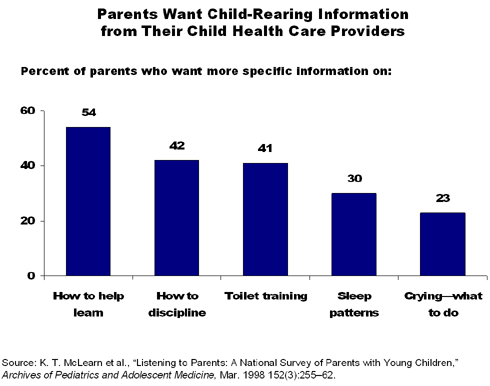Though not for lack of trying, many pediatric practices struggle to meet the needs and expectations of families with young children. Aside from the usual constraints on resources and time, a major roadblock is something that might otherwise be considered a good thing: the standardization of well-child care in the United States—both in the delivery of services and the way providers are reimbursed.
In a report published by The Commonwealth Fund, Stanford University's David Bergman, M.D., a leading expert on quality issues in child health care, explains that standardization, while intended to ensure that families receive core services and key information, tends to encourage a "one-size-fits-all" approach. Many families are subjected to unnecessary visits, while children who are at serious risk for physical, developmental, or behavioral problems fail to get the services they need.
Bergman is convinced that the U.S. system of well-child care provision is ripe for change. In the report, he and his coauthors present a model for effective, efficient well-child care, as well as a guide for future policy and research efforts.

"The well-child care model in the U.S. doesn't easily allow pediatricians to tailor the frequency and content of visits to meet the needs of kids," Bergman says. "A well baby with no problems gets the same 18 minutes as a child who comes in with a complex condition, such as asthma, or a significant behavioral or developmental problem."
According to Bergman, much of physicians' time is spent providing services that could be better provided by other health professionals. "The idea that the pediatrician or the family physician is the primary provider of well-child care is just not working." Instead, he calls for flexible health care teams—including medical specialists, developmental specialists, mental health professionals, and nurse coordinators—that are tailored to the specific needs of each child.
Under the ideal well-child system Bergman outlines, patient care would be coordinated through a medical home, aided by tools for sharing information. Foremost among these is a personal electronic health record, which enables families to engage in secure electronic communications with their clinicians, view test results and retrieve summaries, input health information, and share information with other medical professionals.
While all these changes may sound expensive, paying for them, Bergman argues, is really a matter of redefining roles and rearranging priorities.
"The highest cost we have is face-to-face visit time. The challenge is convincing providers and families that the doctor's office doesn't have to be a physical building. Then, by shifting resources, we can better serve high-risk families while sparing low-risk families the inconvenience of unnecessary trips to the doctor."